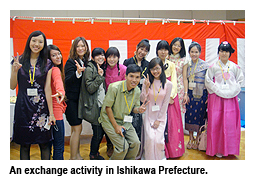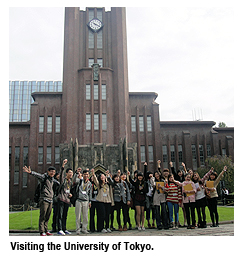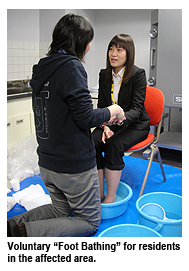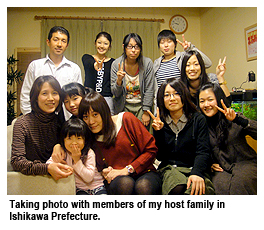A special lesson learned in Japan
Natalie Ma Kit-ying, Year 1 student, Bachelor of Social Sciences (Hon) in Policy Studies and Administration
Almost one year has passed since the earthquake and tsunami hit Japan. People in Hong Kong can still recall the terrifying scenes from the TV news as the tragedy unfolded. However, for the Japanese people, the road to recovery is long.
Over the last year, I noticed on TV from time to time how Japanese people were facing up to the disaster with such fortitude. I was moved and vowed to go to Japan to learn how they struggle against adversity with such patience.
I was lucky to be selected by the JAL Foundation as the only Hong Kong representative to take part in the 17-day 2011 JAL Scholarship Programme for Asian university students.
During the trip we stayed with local families, an unforgettable experience for me, and visited Tokyo, Nara and Ishikawa where we discussed Japan’s strengths and weaknesses with local university students. We went for site visits and worked
together on reports. I learned a lot from the other students: they were able to work independently and competently with good interpersonal skills, and they made me reflect on my own deficiencies.After visiting the comprehensive alarm system and advanced anti-earthquake building techniques at the Crisis Management Centre of Ishikawa Prefecture and Daiwa House Industry Central Research Laboratory, we got to understand how Japanese people can live so peacefully and face crises calmly in a country where earthquakes are a threat. When there is a disaster, people behave in an orderly fashion and help each other. This is not something that can be achieved overnight. It takes years of training, with a concerted effort by the government, private organisations and the people.
Local university students organised a voluntary "Foot Bathing" activity for residents living in the affected area. We washed the feet of the residents with warm water and massaged their hands, offering them words of encouragement. I was deeply impressed by the students’ enthusiasm for assisting people in these affected areas. I began to see what it really means to help others, and that to give is better than to take.During the trip, we learned about traditional Japanese culture like Chado (tea ceremony), Ikebana (Japanese flower arrangement), Yukata (a kind of Kimono worn after a bath), Haiku (Japanese poetry), and Yosakoi dance (originating in Kochi Prefecture). These learning sessions helped me understand more about Japanese people and the rich flavour and strong contrasts of Japanese culture.
Staying with families in Tokyo and Ishikawa was the most meaningful experience for me. I learned about people’s daily life and made friends with all members of my host families. They treated me just like their daughter, making me, a foreign student in Japan, feel the deep warmth of a family. It was like having a second home outside Hong Kong.
Travelling and meeting people in Japan have enriched my life. The trip makes me want to visit other parts of the world and meet more people in other countries. Another fruitful result gained from this trip is the friendships I built with university students from Japan and other Asian countries. We lived together for three whole weeks and worked hard for our reports and performance. We were very sad to leave.



